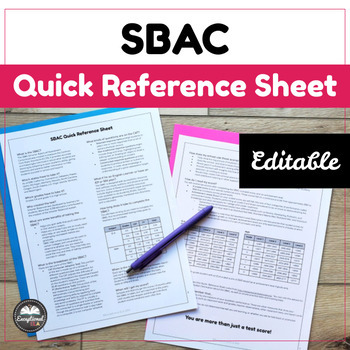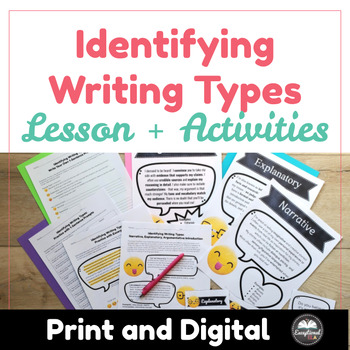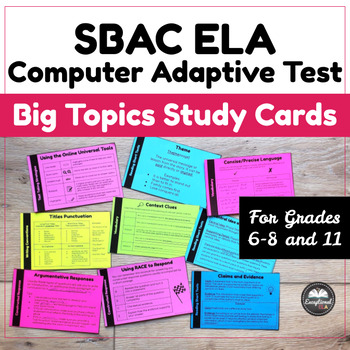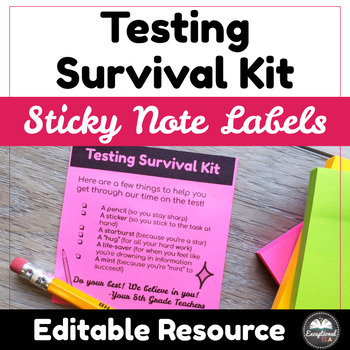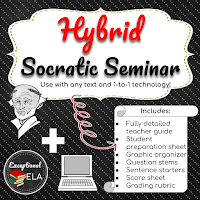So we wrapped up the school year on June 7th, but I'm only beginning to recover now, 5 days later! The end of the school year can definitely be a memorable time, but it can certainly be exhausting (mentally and physically!) What's most important to remember is that you keep your students BUSY. Have a plan in place for what those days look like, otherwise, chaos will ensue (no joke, the energy on the students when they know summer is coming is endless!) Here are some activities that I put into place at the end of the school year, and I hope that it gives you some good ideas too! For reference, I teach 8th graders, but you can easily adapt many of these activities to any other grade!
Teacher Survey
First of all, I think it's really important to get feedback from your students regularly throughout the year, but definitely is a must at the end of the year. Every teacher has their own version of what this survey looks like, but I like to keep it pretty short and simple. Here are the questions I like to ask are the following:
- Since the beginning of the year, where have I improved the most in ELA? Explain why.
- What is your ELA goal for next year? Based on the answers you checked above, choose the area(s) where you feel you really could improve in and explain in 2-3 steps how you might accomplish this.
- What has been your favorite or most memorable project/activity in ELA so far? Why?
- Do you feel like you have the skills to do well in ELA next year because of this class? Explain.
- What did I do well to teach you in ELA this school year? Explain.
- What could I improve upon in her teaching? Explain.
- Any last questions or suggestions for me?
Advice for Future Students
There are several different ways I have my students reflect on the school year by creating pieces of advice for the next incoming class. It's always fun to see what the students cherished about your class or found memorable!
- Letter to a Future Student Madlibs: This one is a fun and free activity I created for TpT. Students fill in the blanks with different parts of speech and create a silly letter to future students. You can download this resource by clicking on the pictures below!
- Flipgrid Video of Advice: This is a really fun one, and if you haven't tried Flipgrid yet in your 1:1 technology classroom, you really should! I had my students answer a few questions about their experience in my class and what students should prepare for on camera. I set the video limit to two minutes. I can't wait to show my future students my former students and the videos they created!
- Things I Wish I Knew Before I Started Middle School Slideshow: I had my students work on a collaborative slideshow. I instructed each student to create 1-3 slides that focused on one piece of advice that they could give an incoming middle schooler. Here are some of the slides they created! They were really enlightening and it gave me reassurance that they remembered some good things throughout the school year 😂
Early Finisher Activities
In my class we were working on a huge career research project at the end of the school year that consisted of 5 components (blog post on this soon!) However, sometimes there would be students that finished their work on one component earlier than others, and I didn't want to introduce the next one until everyone was comfortable completing the one we were currently on. As a result, I created some early finisher activities! These are meant to be quick and engaging and not for a grade. I printed off a few copies of each of the following listed below and had students choose the one they wanted to work on.
I ended up hanging up these activities on the board once students were done with them, and it was cool to see the students pointing out the work that other students did and remembering events that happened throughout the school year!
In my class we were working on a huge career research project at the end of the school year that consisted of 5 components (blog post on this soon!) However, sometimes there would be students that finished their work on one component earlier than others, and I didn't want to introduce the next one until everyone was comfortable completing the one we were currently on. As a result, I created some early finisher activities! These are meant to be quick and engaging and not for a grade. I printed off a few copies of each of the following listed below and had students choose the one they wanted to work on.
I ended up hanging up these activities on the board once students were done with them, and it was cool to see the students pointing out the work that other students did and remembering events that happened throughout the school year!
- End of the Year Playlist: For this activity, students choose 5 songs to represent their school year - one song for their teachers, one song for their friends, one song for their favorite class, one song for their favorite memory, and one song to motivate them for next school year. I made sure to remind them to choose songs with "school appropriate" lyrics 😉
- My School Year in Symbols: Students choose one event from the school year for each month and draw a symbol and write a description for each in this activity. This was a favorite one: students really had to rack their brain to remember some of things that happened in the fall!
- My Best Nine of the School Year: For your students obsessed with social media and Instagram, this might be a good choice! Like the previous activity, students choose nine of their favorite events from the school year and draw them on the "screen" of the phone. There is even room to include hashtags and descriptions!
- End of the Year Luggage Labels: I LOVE traveling and can't wait to get out of my town for a week this summer. For the activity, students design a luggage label for each of their classes!
Poetry Stations
I really preparing this activity at the end of the school year for the students. After state testing and all our big projects, we wrote poetry by rotating into different stations! This lesson took two days and was inspired by Laura Randazzo's post. I got most of the materials from her blog, and I created the following 7 stations:
- Blackout Poetry: To set up this station, I printed out the blackout sheets from Laura's post and got a box of markers ready. Note: Be careful choosing some of the pages that Laura has provided: some of the pages from Of Mice and Men have racist slurs and unless your students are ready to read that, don't print those.
- Magnetic Poetry: For this station, I luckily already had my own set of magnetic poetry, but you can also just print words on a page and cut them out for your students. Or you can buy a set from Amazon! I placed all the magnets on a baking sheet and the students had a lot of fun rearranging them.
- Acrostic Poetry: For this one, I wrote a bunch of one-word movie titles on cards and had students choose one they could write an acrostic poem about. I wrote titles down like "Jaws," "Sharknado," "Titanic," "Frozen," etc. I told them the poems didn't have to do with the movie: they could just use the title as a starting point for their own inspiration!
- Poems for Your Senses: This was a really good one! I printed out some famous works of art in color and had students use template that was in Laura's blog, or they could make up their own structure. It was also a good starting point for art conversation: many of the students didn't know who Salvador Dali was until I showed them his famous melting clocks piece!
- Spine Poetry: I had my students sit near my classroom library for this one and took a bunch of random books off the shelf. Students were free to rearrange the titles in any way to make a fun poem!
- Reversal Poetry: For this one, I just printed out a bunch of copies of the reversal poem template from Laura's blog. Some students had never heard of reversal poetry before and were really intrigued that it could be read both ways! One student even took her template home to write out neatly on paper. So proud of her writing!
- Paint Chip Poetry: For this station, I already had paint chips from a game I bought from Amazon. But you could also get the paint chips from Home Depot or another hardware store ahead of time!
On the first day, I set up all the stations before students came in. I split my class up into groups of 4 and students spent 5 minutes at each station. They wrote their poetry down on paper. I saved some time at the end of class for students to share their poems out loud, and they couldn't wait to!
On the second day, I had student record all their lovely poems into a mini poetry book. I followed the instructed given in this tutorial I found on YouTube below:
Students created a cover, and there were exactly 7 pages left for the 7 poems they wrote yesterday. Super fun! Check out my video walkthrough!
Students created a cover, and there were exactly 7 pages left for the 7 poems they wrote yesterday. Super fun! Check out my video walkthrough!
Minute to Win It Mini-Games
On the very last day of school, we had a lot of fun by setting up minute to win it games. These are short games that really don't take longer than a minute to complete! I got most of my ideas from Pinterest, but you can easily make up your own with the school supplies you have on hand! Here are some of the games we played:
Phew! That was a long post, but I certainly kept the students busy at the end of the year! Hopefully they remember all the fun times we had and the important lessons they learned. How did your school year end? What were some activities you did? Comment below!
Have a great summer!
-Stacey
On the very last day of school, we had a lot of fun by setting up minute to win it games. These are short games that really don't take longer than a minute to complete! I got most of my ideas from Pinterest, but you can easily make up your own with the school supplies you have on hand! Here are some of the games we played:
- Penny stacking: Students used one hand to stack as many pennies as they could in a minute!
- Balloon blow: Students blew and tied off 3 balloons. Whoever could do it the fastest was the winner!
- Card organizing: Students shuffled a deck of cards to begin. Whoever could organize the cards into 4 piles of each suit the fastest won!
- Cup stacking: Students had to stack 10 cups in a pyramid and take them down. Whoever could do it the fastest was the winner!
- Cookie stacking: Students had to stack sandwich cookies on their forehead. Whoever stacked 5 cookies first won!
- M&M transfer: Using a straw, students transferred 10 M&Ms from one plate to another. Whoever could do this the fastest won!
Phew! That was a long post, but I certainly kept the students busy at the end of the year! Hopefully they remember all the fun times we had and the important lessons they learned. How did your school year end? What were some activities you did? Comment below!
Have a great summer!
-Stacey




























